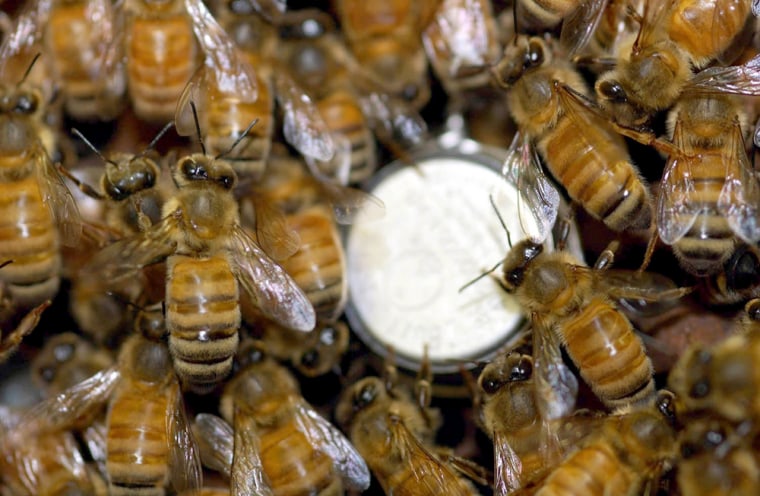Here's the buzz: Honeybees may all look alike, but it's their diversity that helps make them more efficient as a group.
Bees like to keep the temperature in their nests at a warmish 90 to 97 degrees Fahrenheit (32 to 36 degrees Celsius), and do so by clustering together to add heat or by fanning their wings to cool things off.
Now, scientists in Australia have found that nests that include bees from several different fathers — resulting in genetic diversity — make this process smoother and more efficient.
The discovery by Julia C. Jones and colleagues at the University of Sydney is reported in Thursday's issue of the journal Science.
Comparing beehives
The researchers studied normal beehives in which the queen is fertilized by several males and compared them with other hives where they used artificial insemination to make sure only one male mated with the queen.
As it turned out, bees from different fathers tended to start fanning at different temperatures.
That means that in the normal hives, as the temperature rose, more and more bees would stop other jobs and begin fanning to cool things down. Conversely, as temperatures declined, some would stop fanning and go back to other jobs while others kept fanning until it got cooler. The result was a relatively even temperature, on average.
But in one-father hives, most workers tended to start and stop fanning at the same time, resulting in a roller-coaster temperature compared with the normal hives.
Multiple mating of the female honeybee probably developed for other reasons, the researchers say, but as a secondary result it leads to more efficient task allocation in cooling and warming the hive, allowing workers to respond to change without overreacting.
